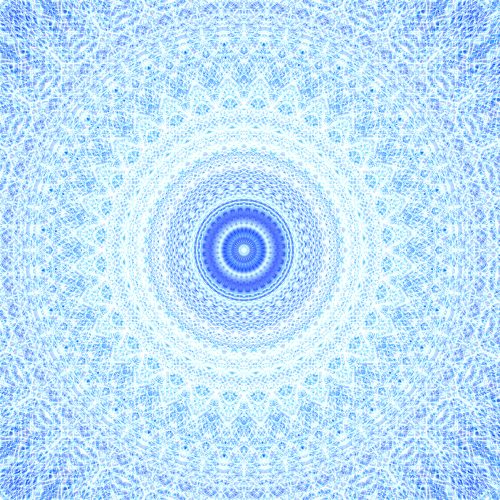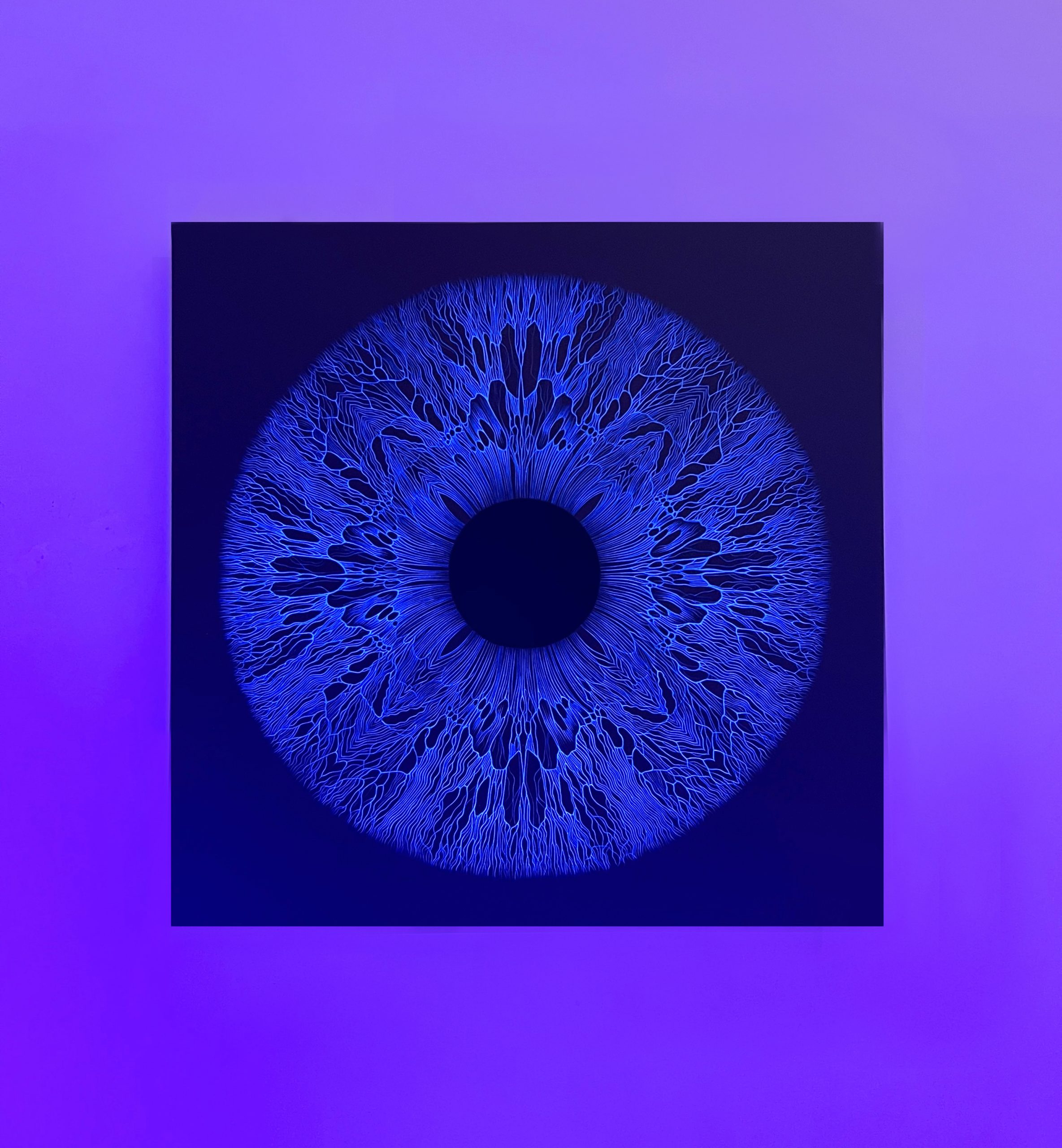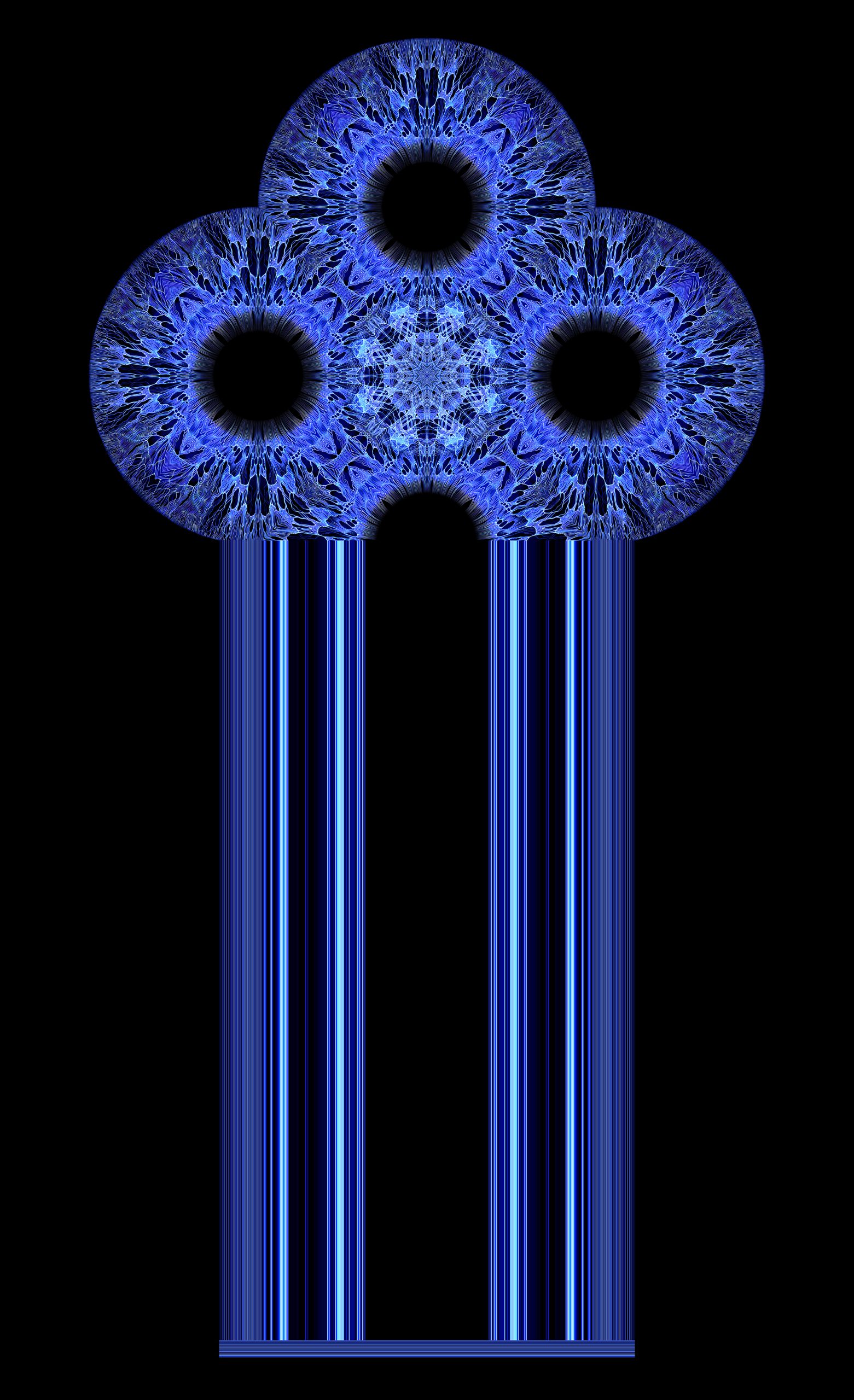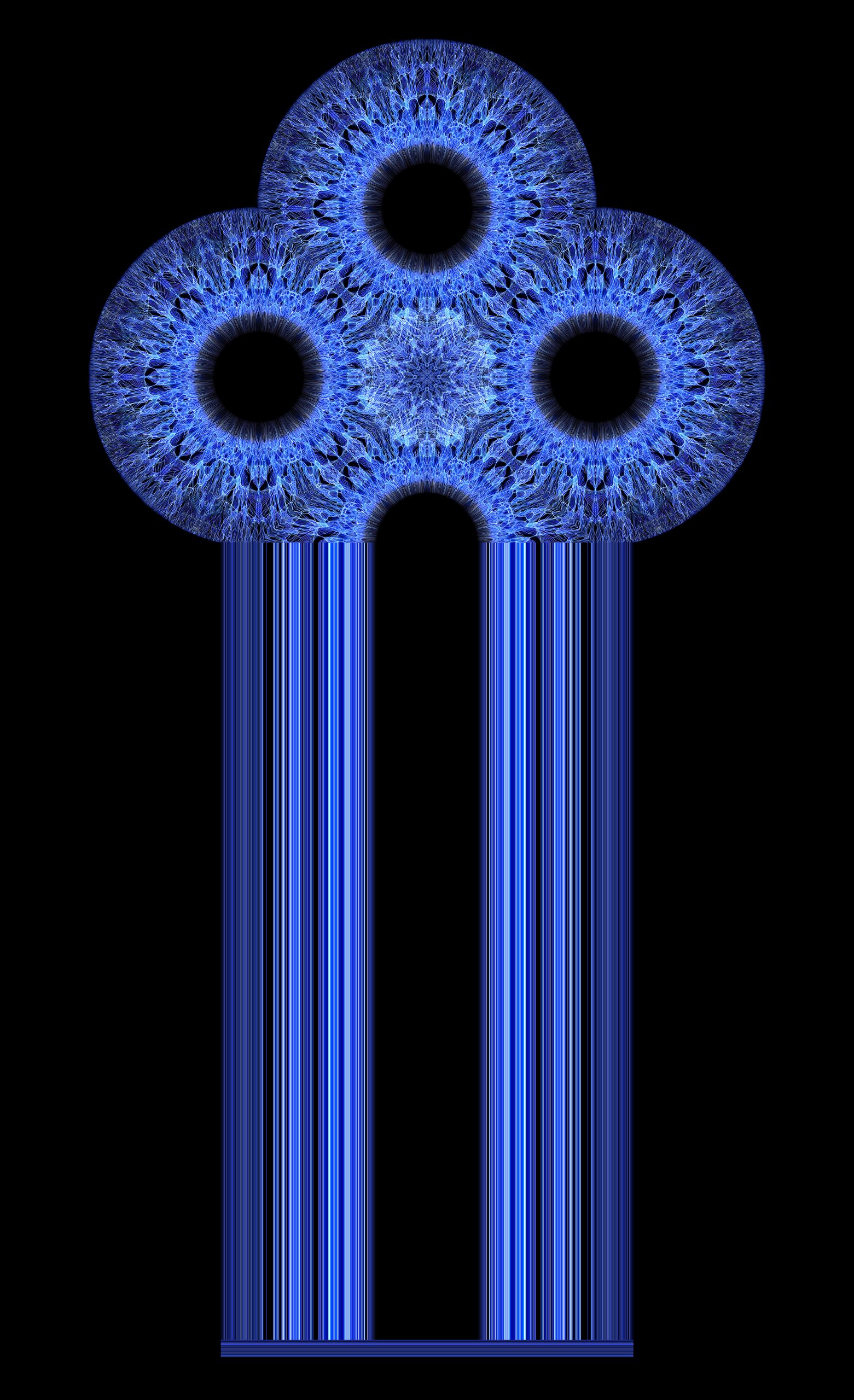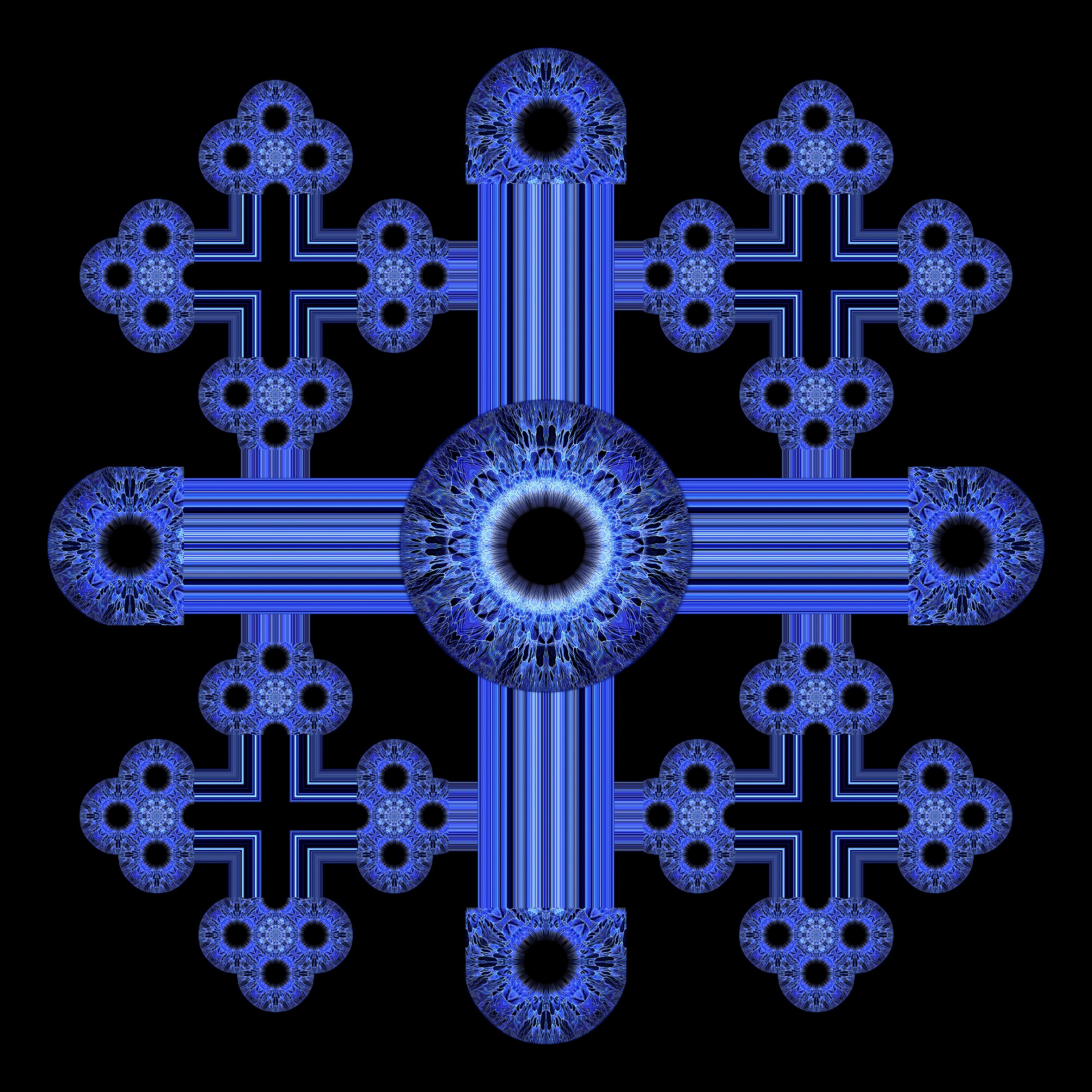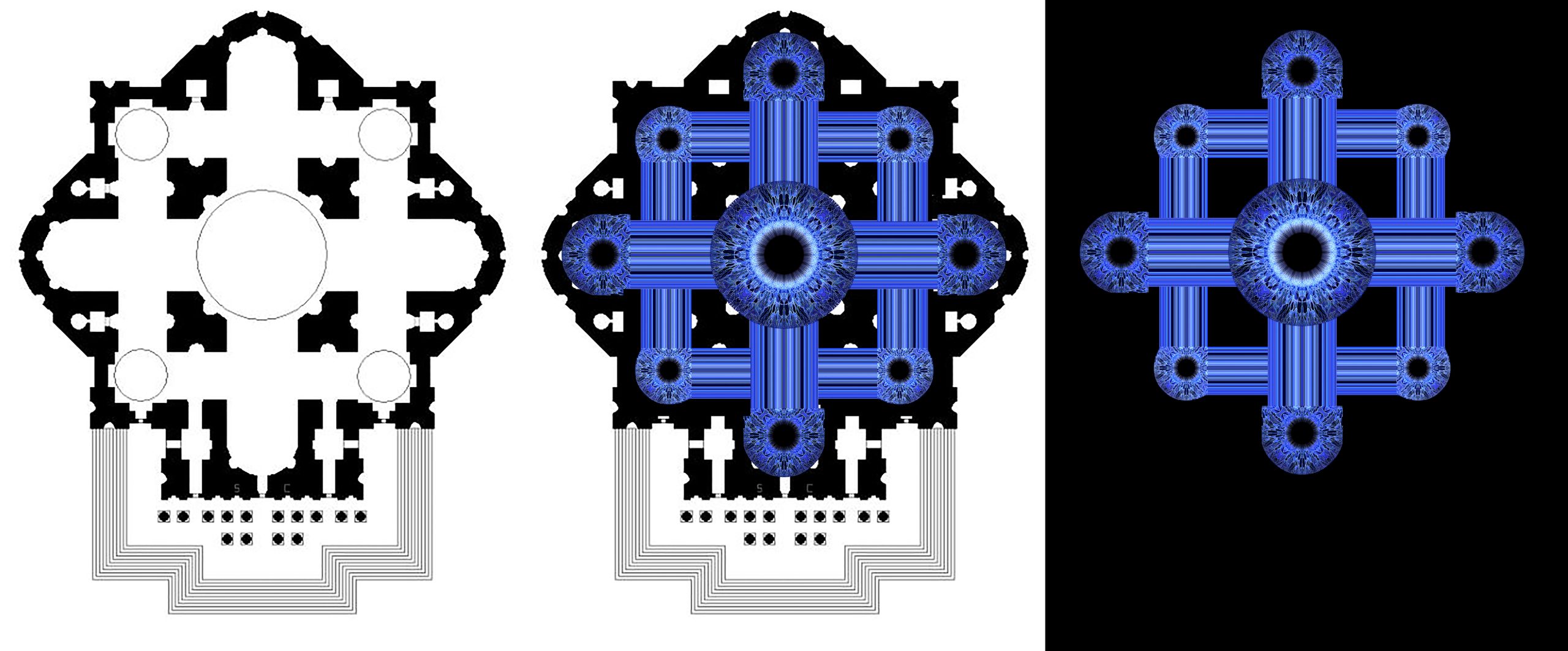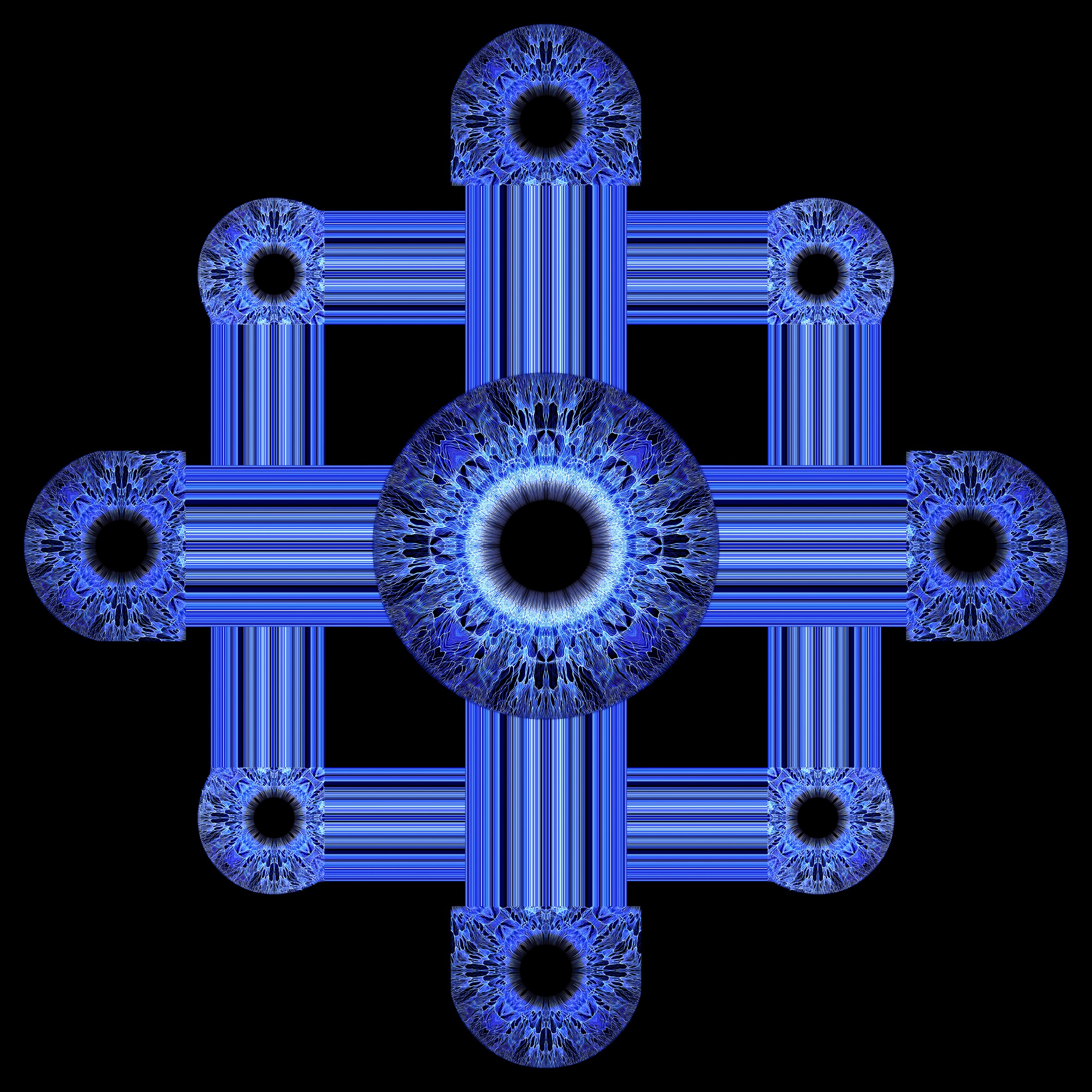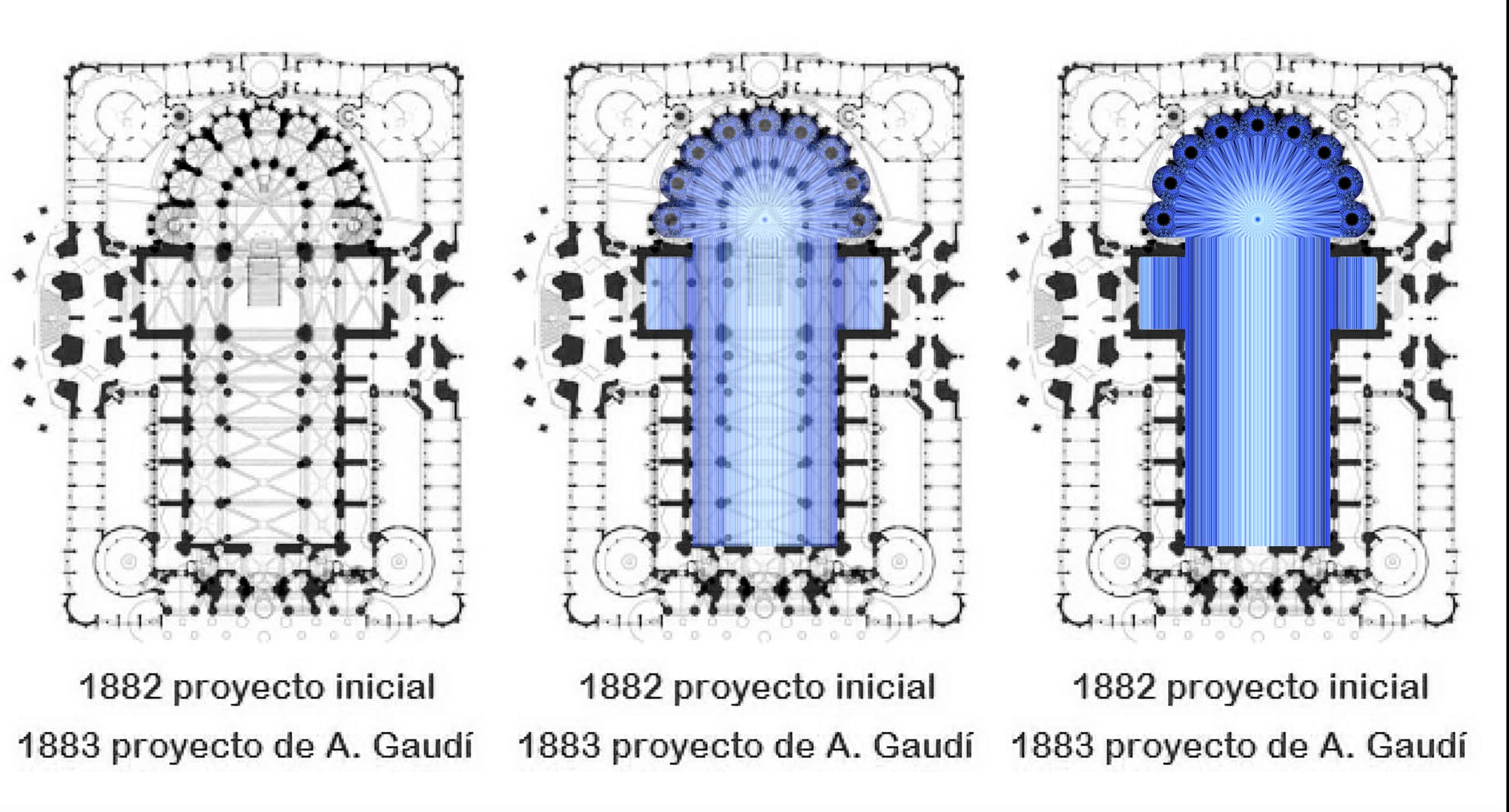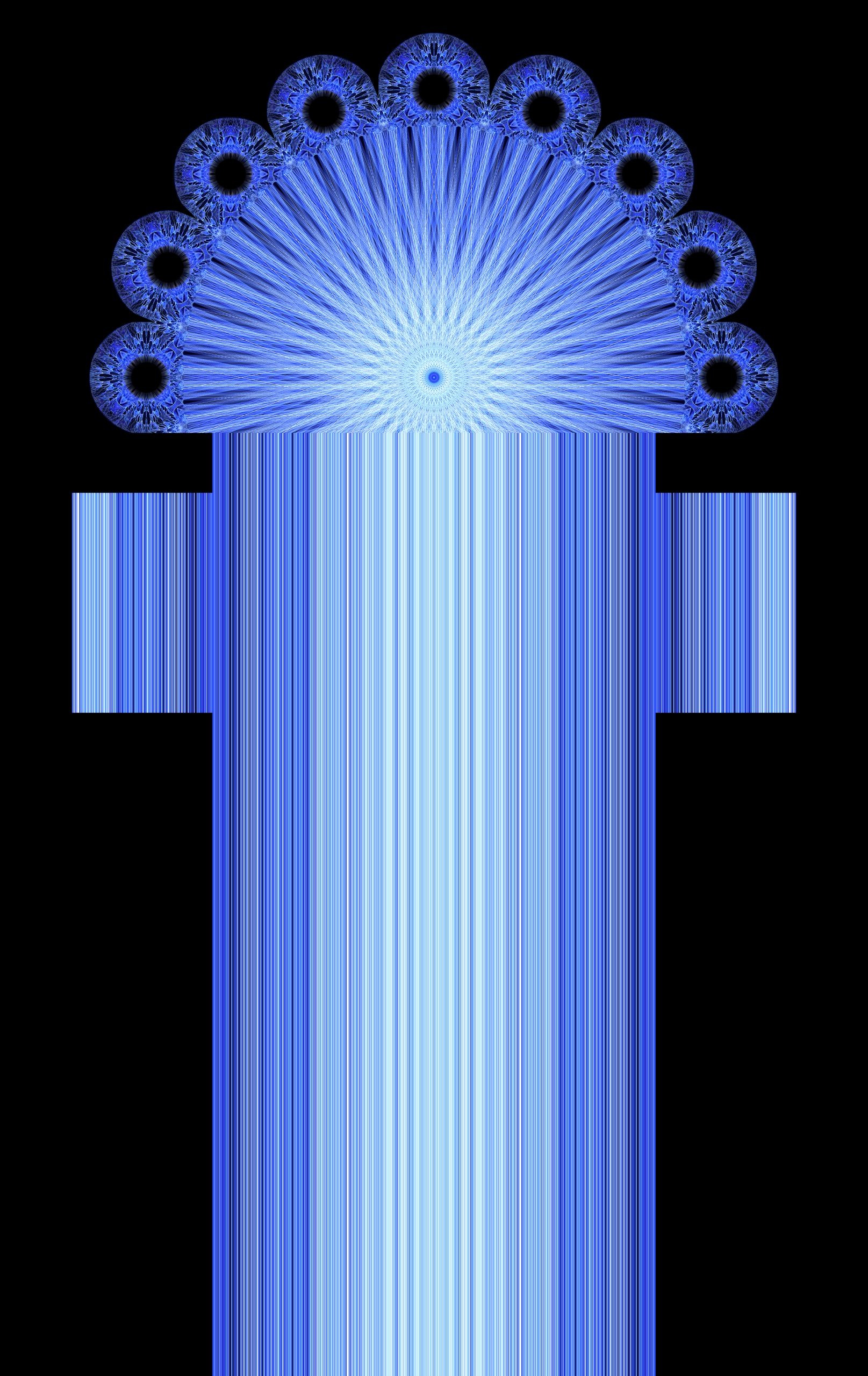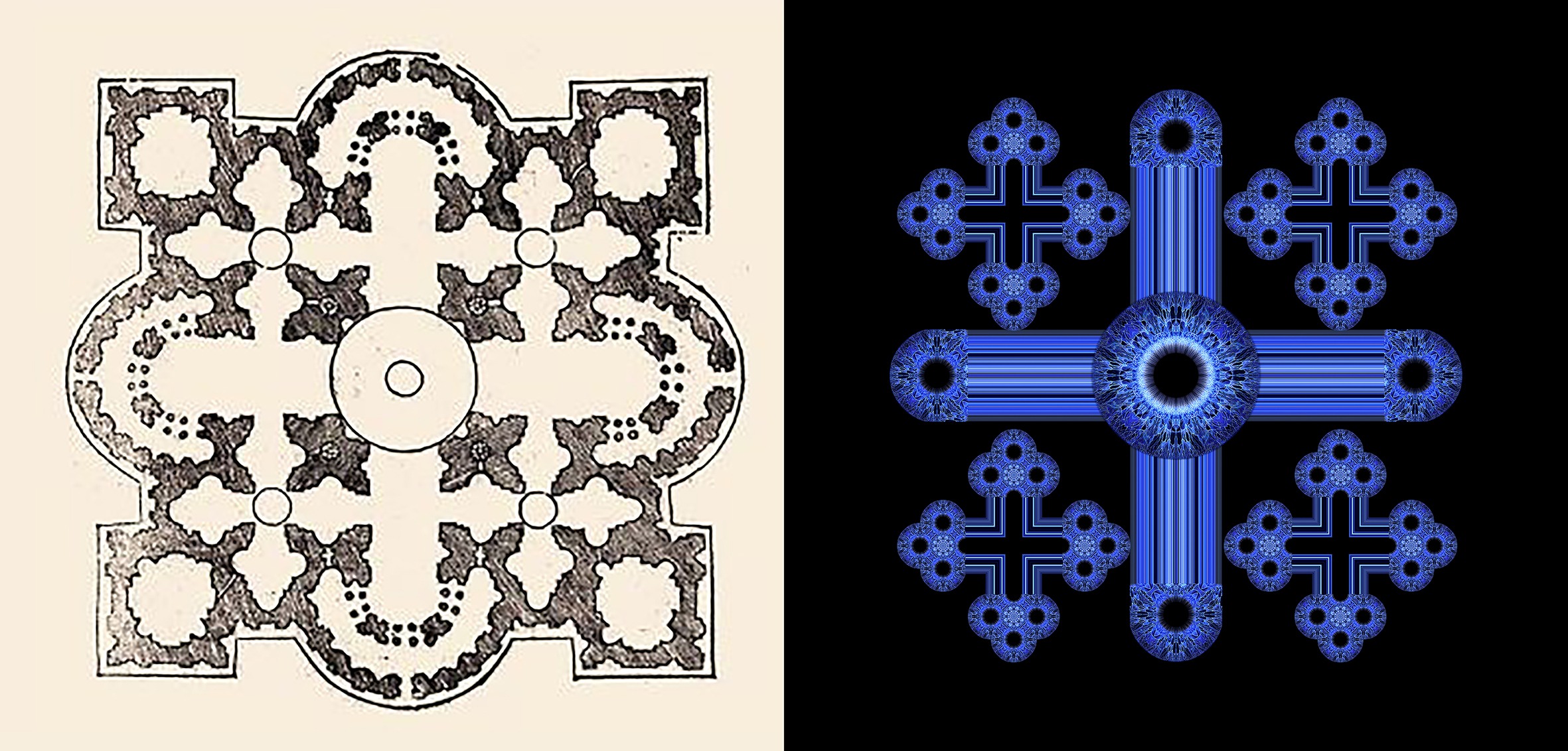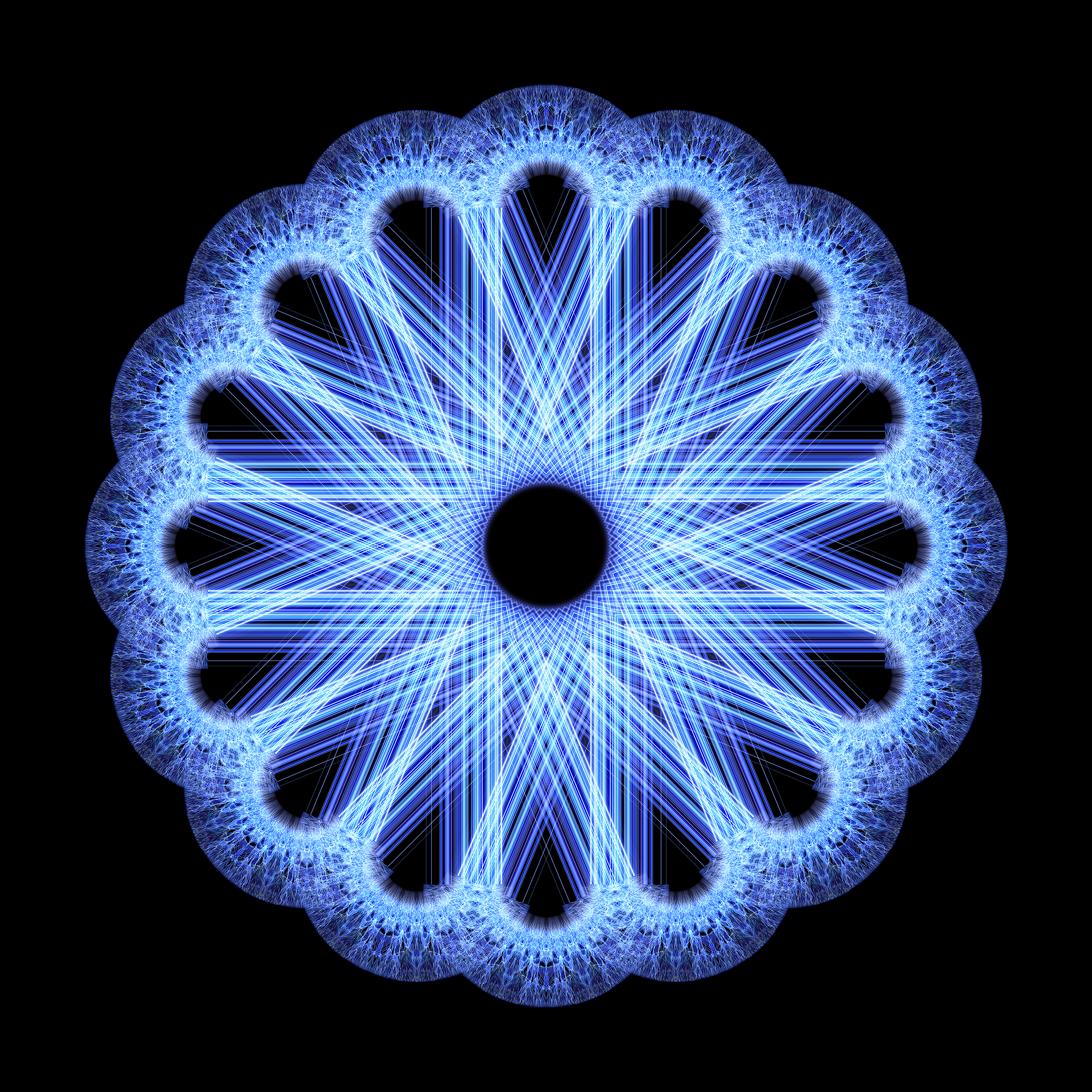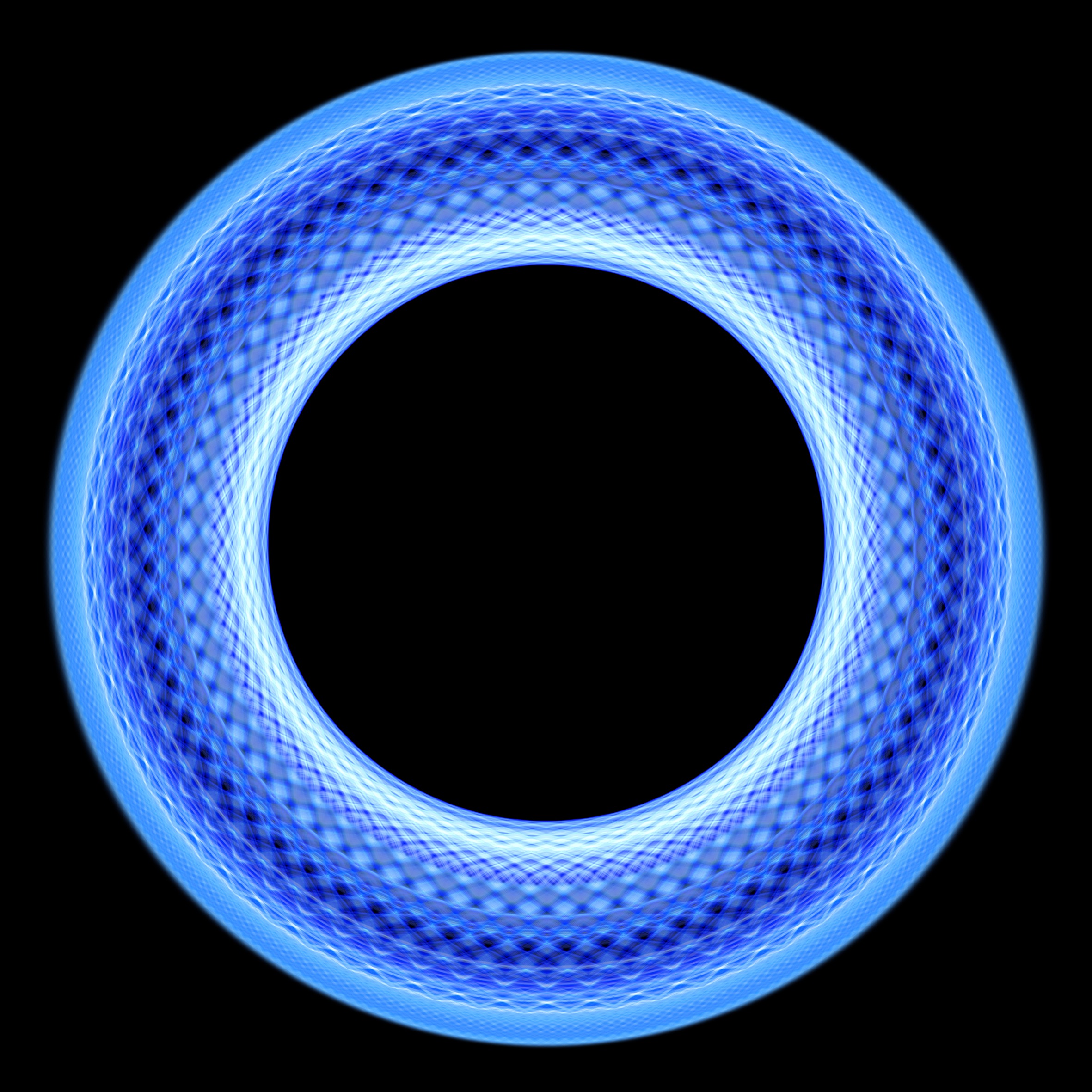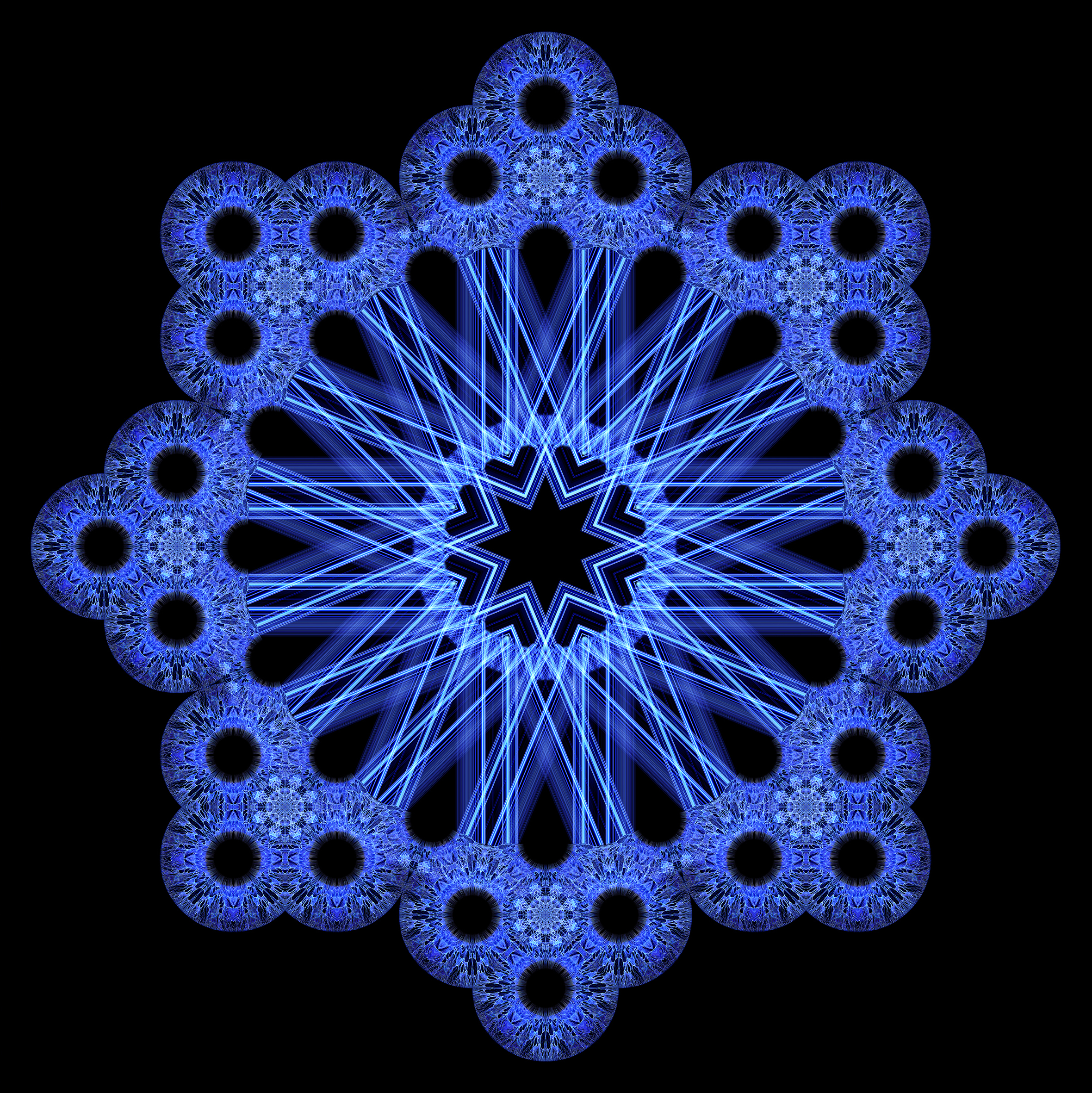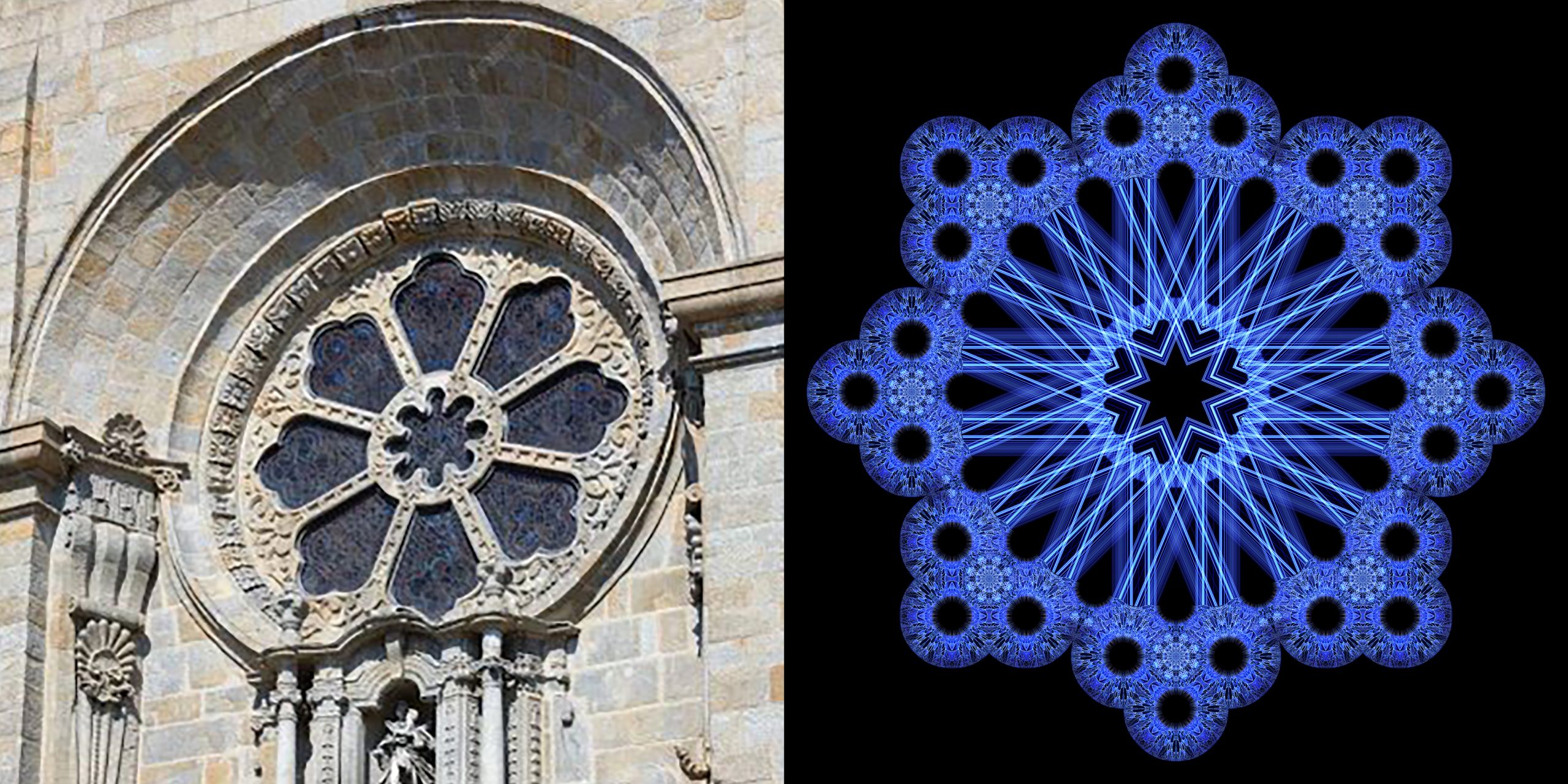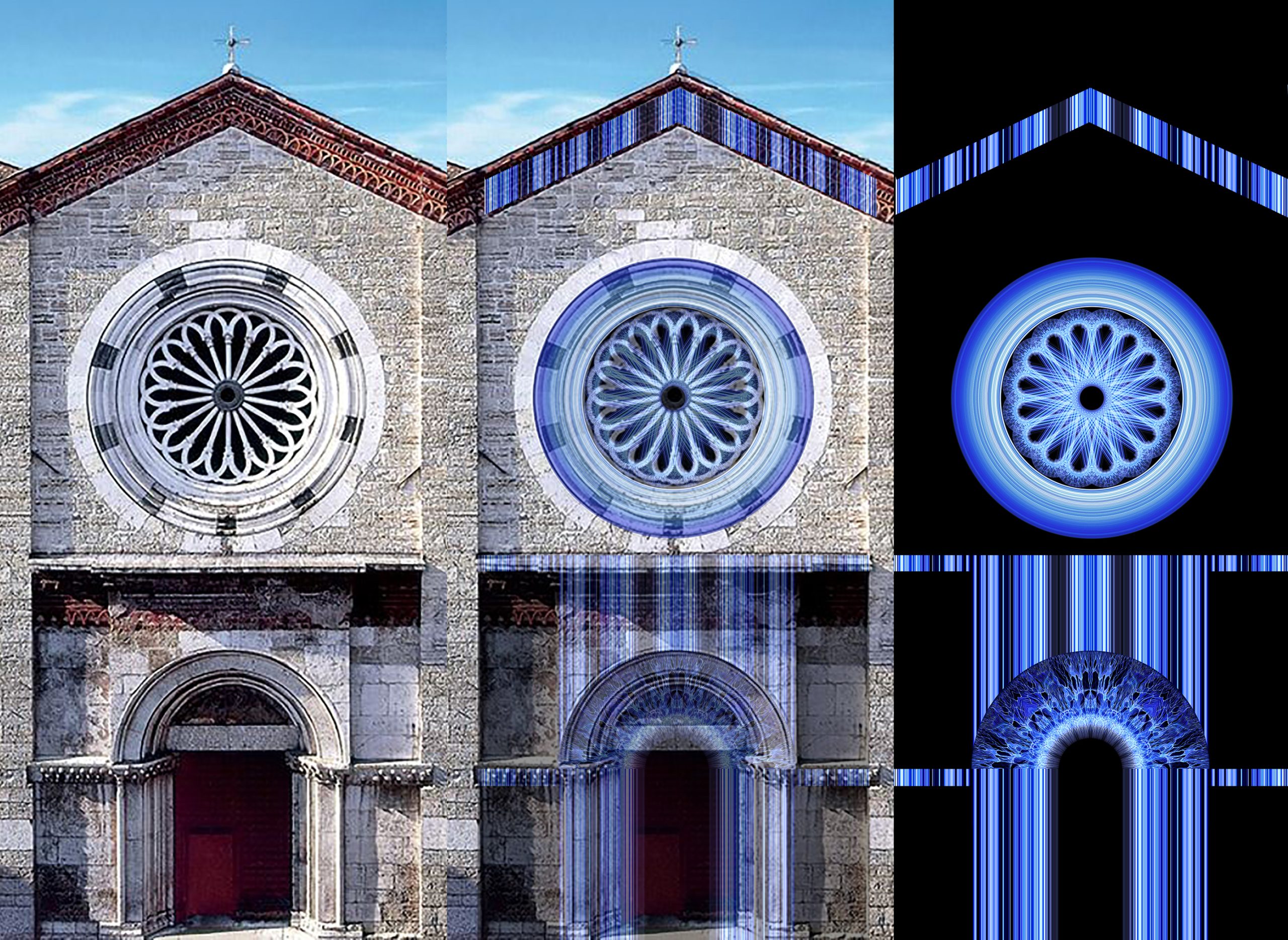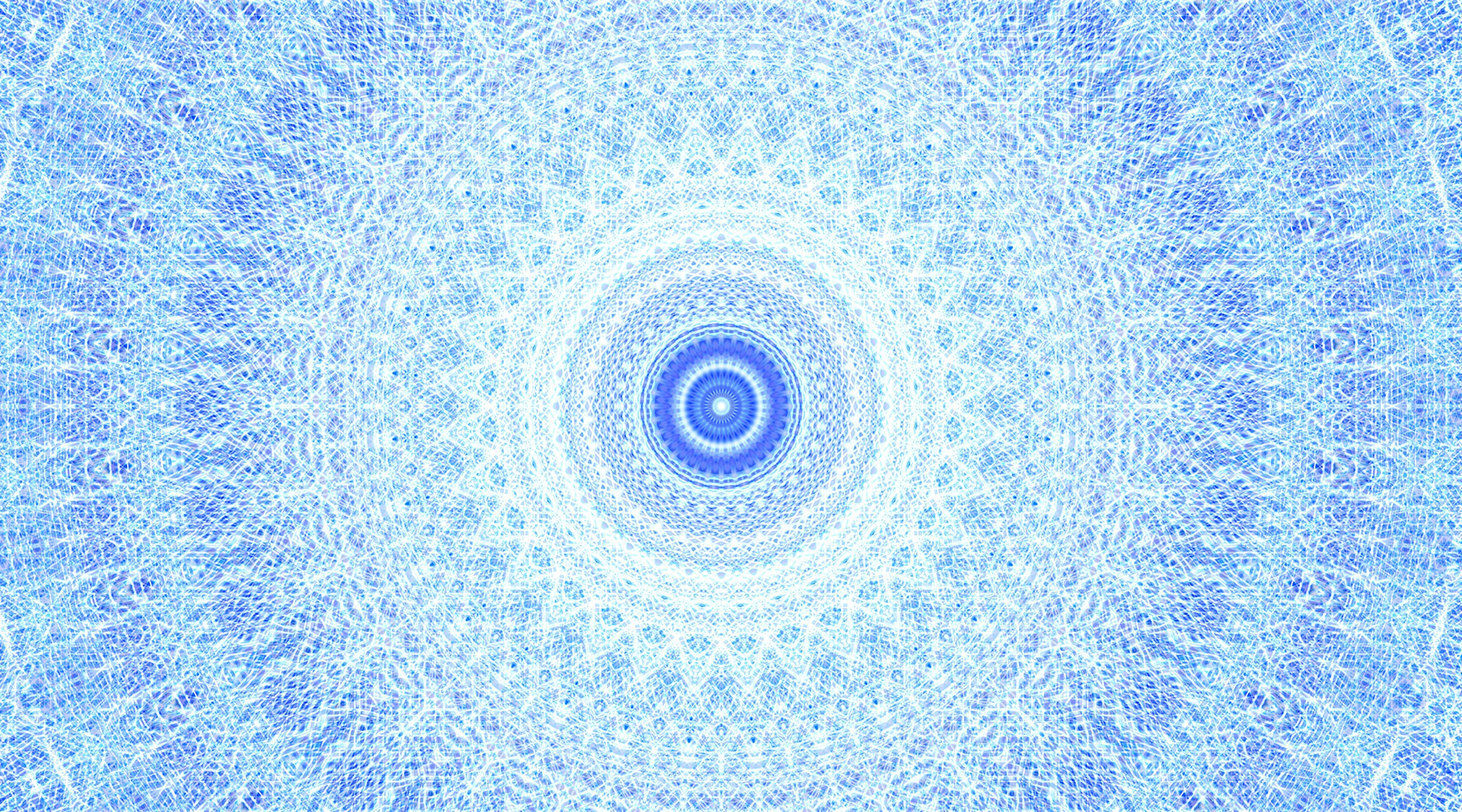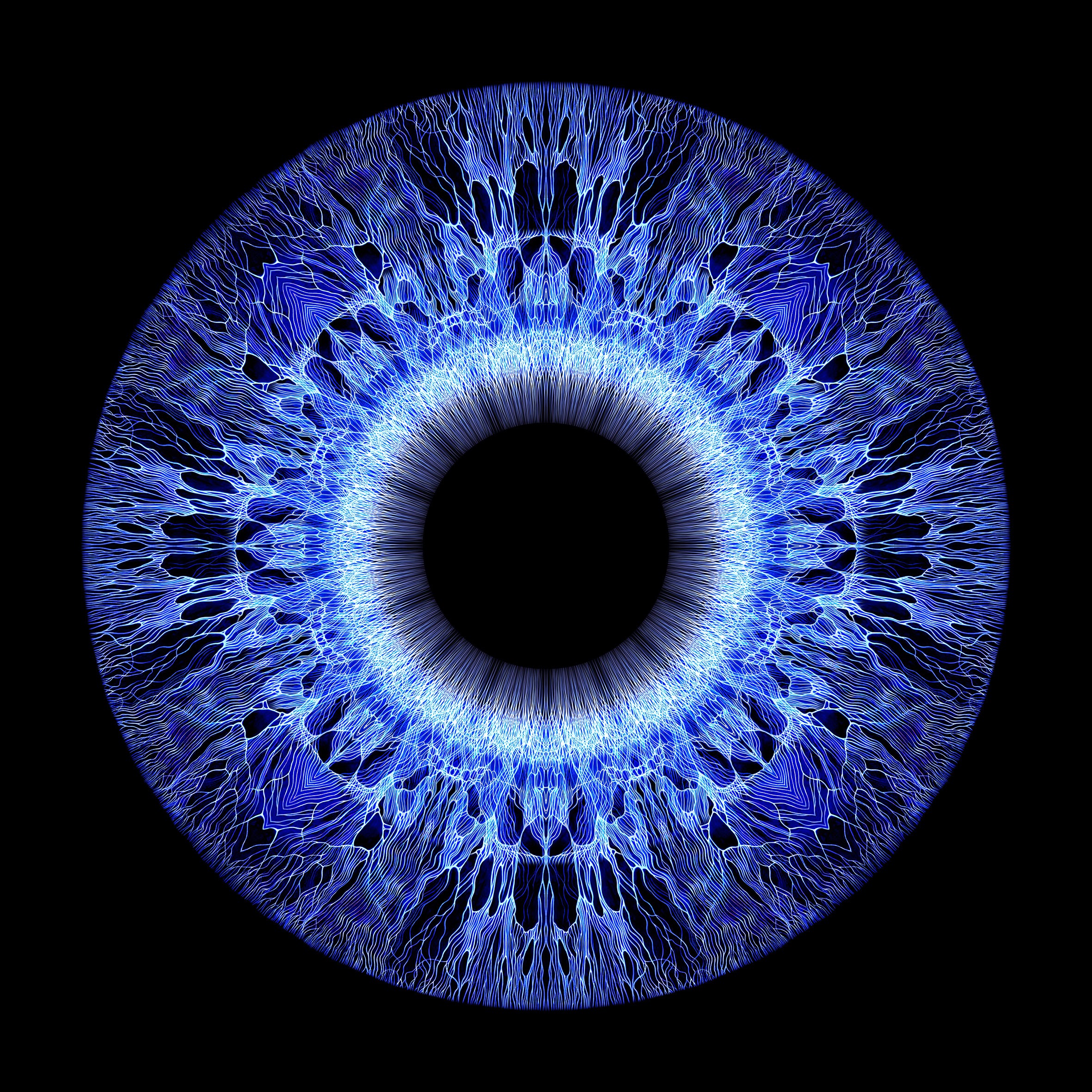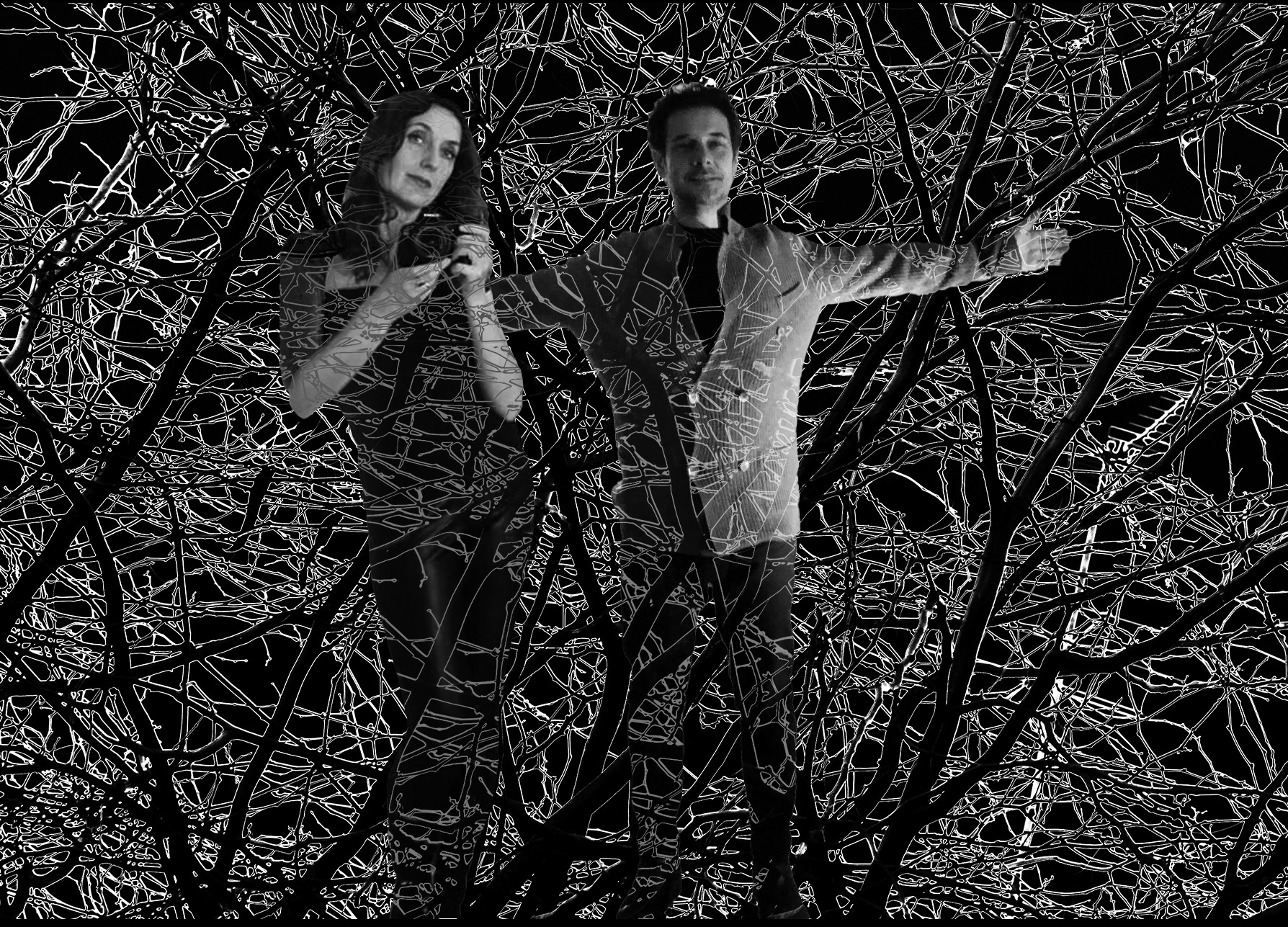DUO – Evengelisti & Serenari
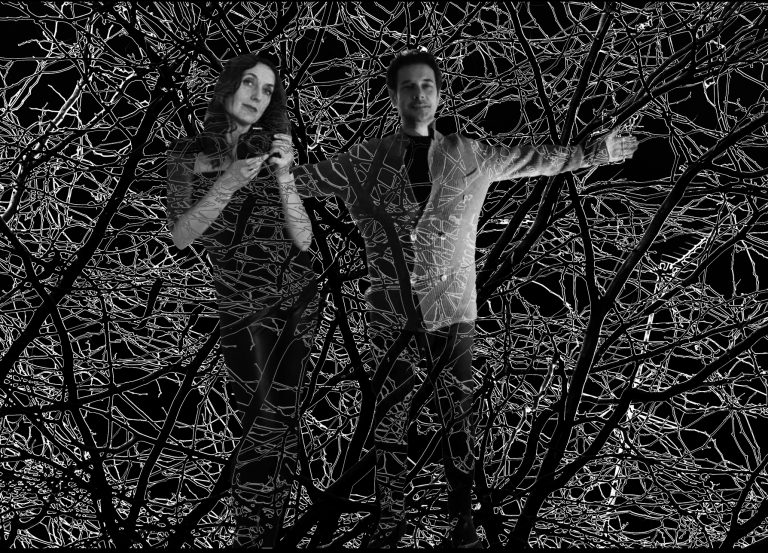
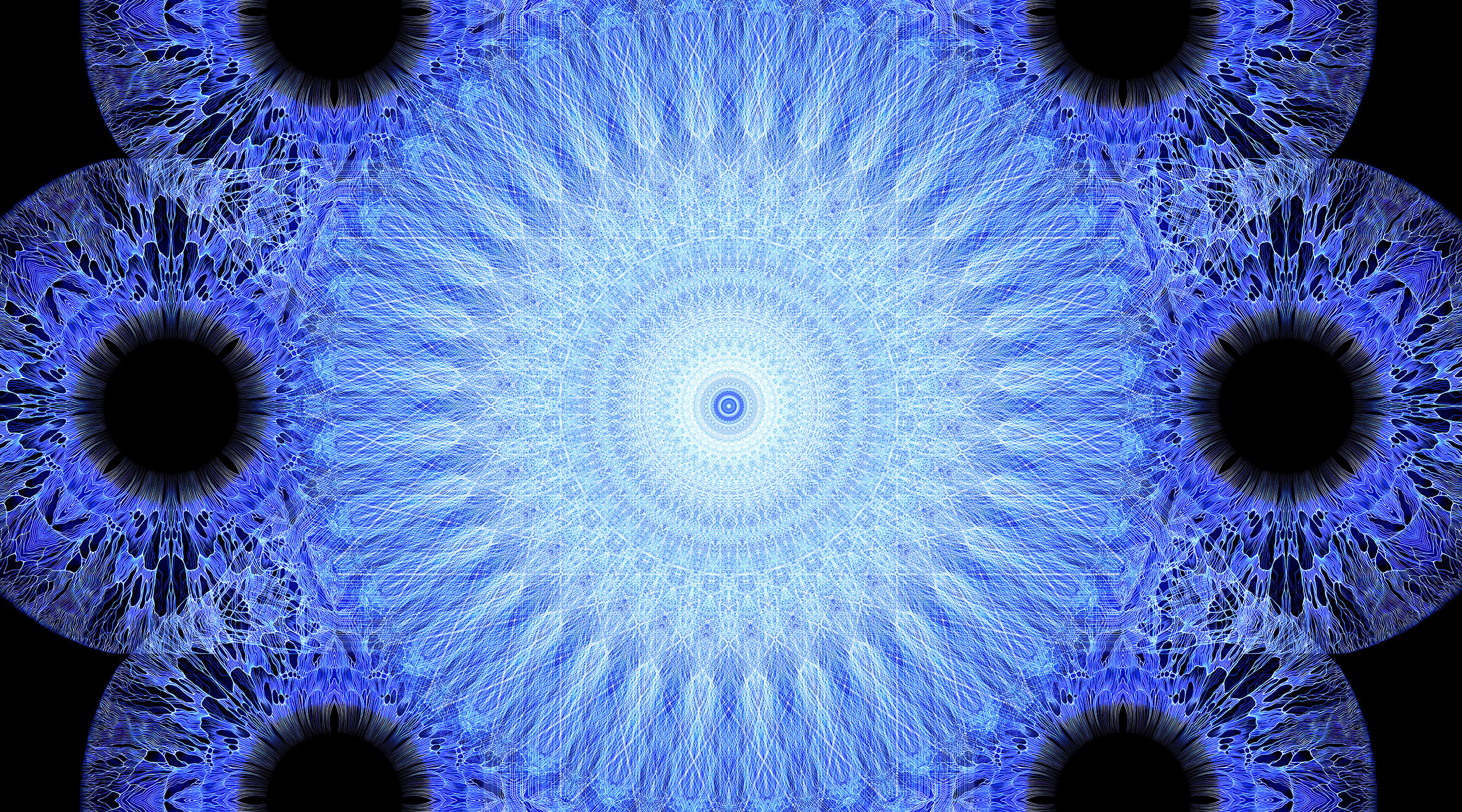
The Evangelisti – Serenari duo is made up of Nicola Evangelisti and Silvia Serenari, artists who have been working professionally for almost thirty years. United by a passion for the symbols of ancient religions, science and a transcendental vision of existence, they have developed a personal research in the field of video art and digital art, also giving life to two neologisms “iridizations” and “cathedralizations” which conceptually define their work. Starting from 2024, the duo will develop a cycle of works that reshape reality and sacred Renaissance and medieval architecture according to a different aesthetic module, a paradigm of a new vision of contemporaneity in line with the recent scientific and philosophical revolution.
These works aim to suggest a balance between science and spirituality within a harmonious path of investigation into reality.
The Quantum R-Evolution project, composed of a video, a digital print and a black light art painting, was presented by Davide Sarchioni at the BBS-Pro space in Prato.
The Quantum Flower project was exhibited at Campogrande Concept as part of Art City 2025. Both videos were made in collaboration with the composer of the same name Nicola Evangelisti.
Credits – Book “Mag” Collection Koverart.
You have coined new terms to define your operating methods and your artistic cycles. What do you mean by “iridizations” and “cathedralizations” and what does stretching consist of? – Francesca Baboni
ES The duo’s work is something radically new both in the field of our personal research and in art in general. It was therefore necessary to create new terms in order to define it. “Iridization” in the way we understand it, consists in the action of recreating a pre-existing element of architecture through a redefinition that sees the iris as the founding element. On the other hand, “cathedralization” is the process that leads the iris to be a constituent part, module, and first principle of a sacred architecture. Stretching is a technique used by Silvia that consists of dissecting the iris and rejoining or extending the section point in a linear form, a procedure that allows you to move from a fractal and branched expressive register to an abstract geometric one.
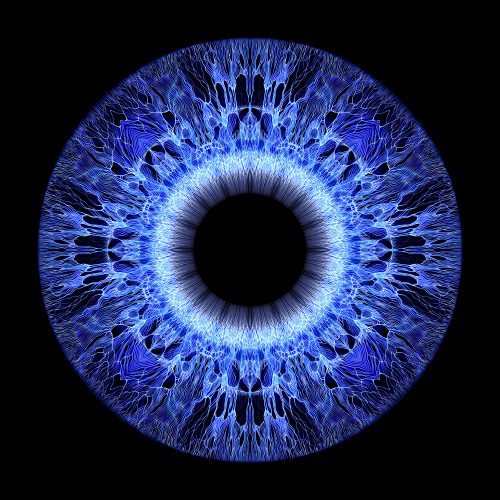
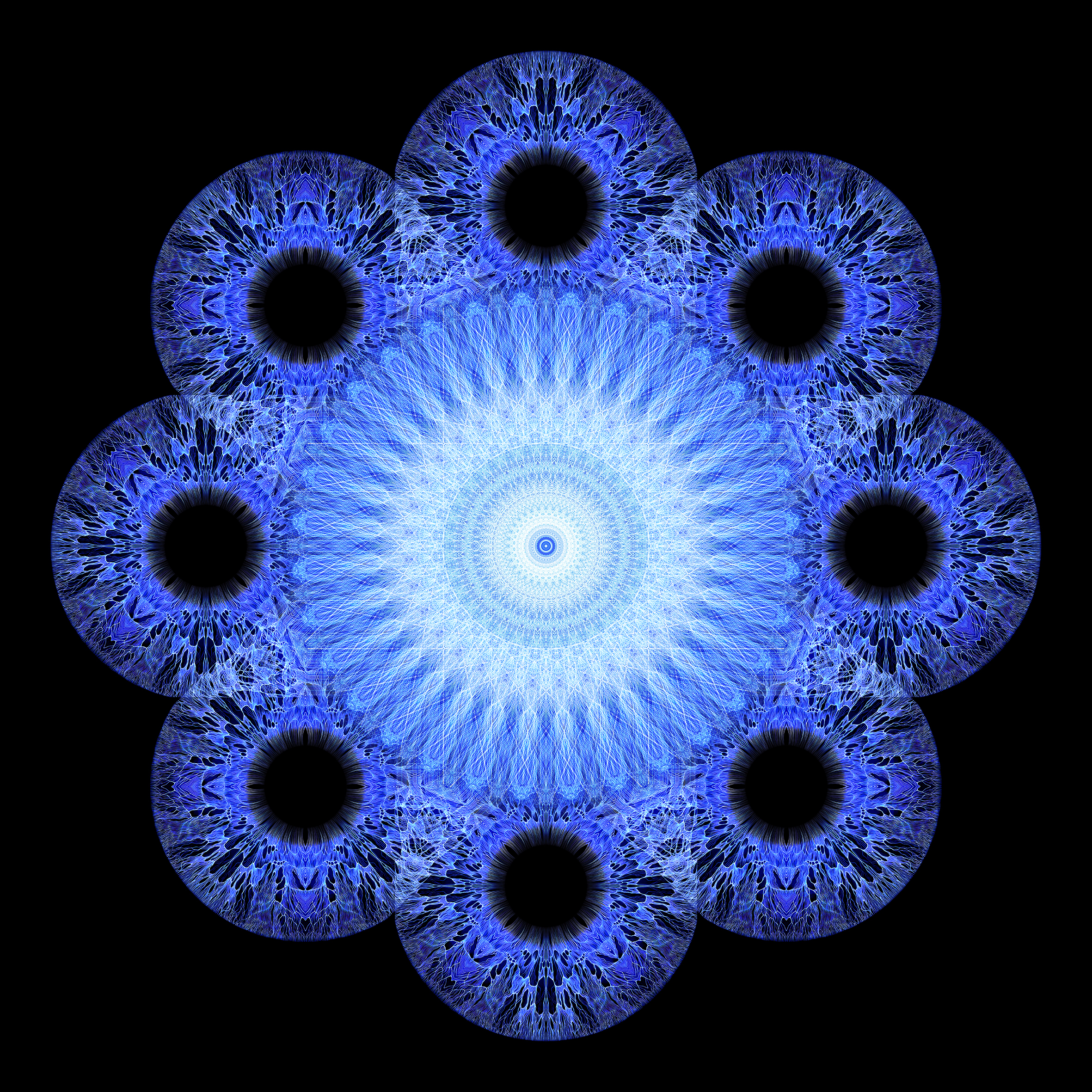
You have already carried out a series of works in which you are involved both technically and theoretically. What is your research about? One thing you are talking about, for example, is the desire to transcend physical reality through the symbolism of light, putting matter and spirit in communication. – Francesca Baboni
ES Our research, in short, is a reinterpretation of the representation of the sacred. Considering light a “hierophany” and moved by the need to transcend matter in favor of a spiritual elevation, we have made a parallel between the iris/passage, through which the photons reach the retina, with the rose windows and oculus of sacred architecture thanks to which, through the passage of light, it is possible to experience the divine. On a technical level, the languages we are currently using are digital photography reworked on the computer, video art and black light art. We do not believe in the myth of technology, but we use technology as a tool to finalize our project.
In your works the reference to quantum physics is frequent. The recent QUANTUM R-EVOLUTION exhibition in Prato, in which three works by the duo were presented to the public for the first time, presents not only the video of the same name but also the pictorial work of black light art. What exactly are you referring to when you talk about quantum revolution and how does your research relate to scientific thought but also to mysticism? – Francesca Baboni
ES The quantum is, in some way, the basic piece of reality, similarly for us the iris is the constitutive element of a redefinition of architecture and the iconography of the sacred from the Middle Ages to the Renaissance. Quantum physics represents a scientific revolution whose implications are also social and philosophical. We find ourselves in the absence of values and points of reference: the god of the Middle Ages died with Nietzsche and science has ceased to embody the myth of progress having led the world to conflicts and ecological collapse. We think that humanity has reached the end of an era and that something new is about to come. Our hope is that of a harmonious and unifying vision of the contrasts inherent in our era in a superior synthesis in which spiritual visions can be integrated with scientific ones in the overcoming of an economic imperialism with tragic and uncontrollable effects.
